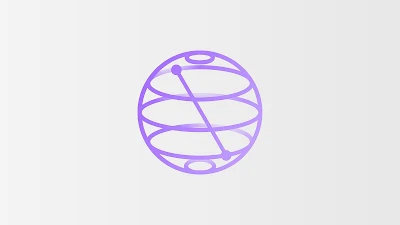Introduction
Quantum computers are no longer just theoretical! Companies like IBM and Google have made real quantum devices accessible via the cloud, and you can connect to them using the Qiskit library. In this article, you’ll learn:
- How to install Qiskit,
- Basic quantum concepts (qubits, gates, circuits),
- How to build your first quantum circuit.
Step 1: Installing Qiskit
Python and Jupyter Notebook
Qiskit is a Python-based library. To get started:
- Ensure Python 3.7+ is installed.
- Use Jupyter Notebook for interactive experiments (recommended).
Terminal Installation:
pip install qiskit # Core Qiskit package
pip install 'qiskit[visualization]' # Visualization tools{codeBox}
Test the Installation:
import qiskit
print(qiskit.__version__) # Output: 1.3.2 (latest version){codeBox}
Step 2: Basic Quantum Terms
Qubit (Quantum Bit)
- Classical bits are 0 or 1. Qubits, however, can exist in superposition (a combination of 0 and 1).
- Analogy: Like a spinning coin that represents both heads and tails simultaneously.
Quantum Gates
Operations applied to qubits. Examples:
- Hadamard (H): Creates superposition (0 → 0+1).
- CNOT: Entangles qubits (controls a target qubit based on another).
Quantum Circuit
- A sequence of qubits and gates.
Step 3: Your First Quantum Circuit
Build a Simple Circuit:
from qiskit import QuantumCircuit
from qiskit.visualization import plot_histogram
# Create a 1-qubit circuit
circuit = QuantumCircuit(1, 1) # 1 qubit, 1 classical bit
# Add a Hadamard gate
circuit.h(0)
# Measure qubit 0 → classical bit 0
circuit.measure(0, 0)
# Visualize the circuit
circuit.draw("mpl") # Requires matplotlib{codeBox}
Output: A circuit diagram with a Hadamard gate applied to qubit 0.
Why This Works:
The Hadamard gate puts the qubit into a 50% probability state for 0 or 1. Measurement collapses it to a definite value.
Step 4: Run on a Simulator
from qiskit import Aer, transpile
simulator = Aer.get_backend('aer_simulator')
compiled_circuit = transpile(circuit, simulator)
# Run 10 shots
results = []
for _ in range(10):
job = simulator.run(compiled_circuit, shots=1)
counts = job.result().get_counts()
results.append(counts)
print(f"Result {_+1}: {counts}")
# Visualize aggregated results
aggregate_results = {}
for count in results:
for key in count:
aggregate_results[key] = aggregate_results.get(key, 0) + 1
plot_histogram(aggregate_results){codeBox}
Sample Output:
Sonuç 1: {'0': 1}
Sonuç 2: {'0': 1}
Sonuç 3: {'0': 1}
Sonuç 4: {'1': 1}
Sonuç 5: {'1': 1}
Sonuç 6: {'1': 1}
Sonuç 7: {'0': 1}
Sonuç 8: {'0': 1}
Sonuç 9: {'0': 1}
Sonuç 10: {'1': 1}Analysis:
You’ll see roughly 50% 0s and 1s. Why? The Hadamard gate creates superposition, and measurement randomly collapses to 0 or 1.{alertInfo}
Resources:
- Qiskit Documentation
- IBM Quantum Lab (Free account).
What’s Next?
In the next article, "Quantum Gates and Basic Operations in Qiskit: From Hadamard to CNOT", we’ll cover:
- Pauli gates (X, Y, Z),
- Entanglement with CNOT,
- Multi-qubit circuits.
Ready to explore quantum computing? Start coding with Qiskit today!
Leave your questions in the comments below!{alertSuccess}













1 Comments
Lovely <3
ReplyDeleteKonuyla ilgili yorum giriniz.